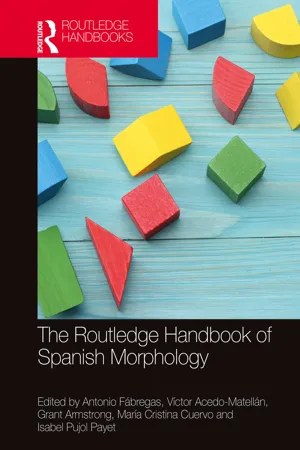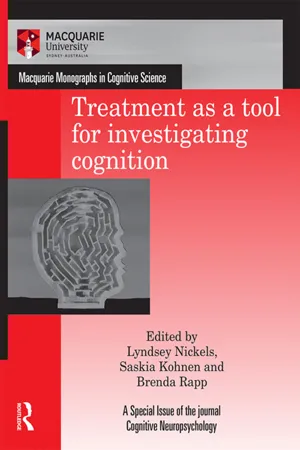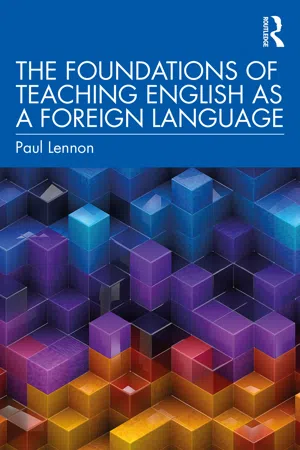Languages & Linguistics
Irregular Verbs
Irregular verbs are verbs that do not follow the regular pattern of adding -ed to form the past tense. Instead, they have their own unique forms. Examples of irregular verbs include "go" (went), "eat" (ate), and "see" (saw). It is important to memorize irregular verbs in order to use them correctly in speech and writing.
Written by Perlego with AI-assistance
Related key terms
1 of 4
Related key terms
1 of 3
3 Key excerpts on "Irregular Verbs"
- eBook - ePub
- Antonio Fábregas, Víctor Acedo-Matellán, Grant Armstrong, María Cristina Cuervo, Isabel Pujol Payet, Antonio Fábregas, Víctor Acedo-Matellán, Grant Armstrong, María Cristina Cuervo, Isabel Pujol Payet(Authors)
- 2021(Publication Date)
- Routledge(Publisher)
This same positioning of the stress is the one favoured by verbs with an infinitive ending in -ear, -oar, -eer, -oer, -aer and so on (pelear ‘to fight’, loar ‘to praise’, leer ‘to read’, roer ‘to gnaw’, caer ‘to fall’. . .): pelé-a, ló-a, lé-e, ró-e, cá-e and so on. And some verbs in this subgroup add a consonant “y” in forms of the preterit tense: leyó, cayó and so on. This same consonantal epenthesis is also what we have in the boundary between root and desinence for verbs ending in - uir (construir ‘to build’, huir ‘to run away’. . .): constru-y-es, hu-y-es and so on. There is finally a group of verbs whose irregularities are of a morphological nature, even if, in some cases, as for verbs with vowel alternations in the root, there also exists some basic phonological conditioning. From now on, I will only consider this sort of irregularity, that is, morphologically Irregular Verbs. The distribution of irregular forms of this type for a given verb is morphologically (paradigmatically) determined, as long as they depend on categories such as conjugation class, stem, tense or any of the morphosyntactic properties corresponding to the cells in the Spanish verb paradigm. Contrary to the verbs with orthographic, syntactic and phonological “irregularities”, there is no way in Spanish to predict whether a given verb belongs to this former class of Irregular Verbs. The definition as an irregular verb of this sort has to be stipulated in the lexicon. Similarly, the affiliation with a specific type of irregularity amongst the different existing types within this irregular class needs also to be lexically specified, although in this case, properties such as conjugation class and phonological configuration sometimes can be easily associated with some specific type of irregularity - eBook - ePub
- Lyndsey Nickels, Saskia Kohnen, Brenda Rapp(Authors)
- 2018(Publication Date)
- Psychology Press(Publisher)
The past-tense inflection has been studied in depth for its ability to shed light on theories of inflectional morphology and language processing. One theory, Words and Rules, proposes a dual mechanism made up of a lexical component for Irregular Verbs and a rule-based process for regular verbs (Marcus et al., 1992; Pinker, 1999; Pinker & Ullman, 2002). An alternative theory proposes a single mechanism that accounts for both regular and irregular past tense without rule-based processes (e.g., Joanisse, 2004; McClelland & Patterson, 2002; Rumelhart & McClelland, 1986; Westermann & Ruh, 2012). Children with specific language impairment (SLI) frequently have difficulty with the acquisition of tense and agreement (Leonard, Davis, & Deevy, 2007; Leonard et al., 2003; Rice & Wexler, 1996; Rice, Wexler, & Cleave, 1995). As such, this population provides an opportunity to elucidate theories of past-tense production and acquisition further. Past tense is marked in English in one of two ways. Regularly inflected verbs carry a suffix (“ed” in the written form) that indicates past tense. This past-tense suffix is realized phonetically as [t] when affixed to a stem ending in a voiceless consonant, (e.g., walk, walked), [d] after a stem ending in a voiced consonant (e.g., hug, hugged), and [ əd ] after a stem ending in /t/ or /d/ (e.g., add, added). Irregular Verbs, on the other hand, do not carry the “ed” suffix. Instead, they typically (but not exclusively) involve a vowel change in the verb stem (e.g., run, ran). Both the single- and dual-mechanism theories posit that irregular verb forms are lexically stored as connections between sound (phonology) and meaning (semantics) (Joanisse & Seidenberg, 1999; Pinker, 1999; Rumelhart & McClelland, 1986). The theories differ in their treatment of regular verbs. The single-mechanism theory argues that the same mechanism can produce both regular verbs and Irregular Verbs and that morphologically complex verbs are stored as lexical items - Paul Lennon(Author)
- 2020(Publication Date)
- Routledge(Publisher)
To be able to use any irregular (or regular) verb, one needs to know only its base form, past tense form and perfect participle. There are partial patterns of systematicity among Irregular Verbs. The following seven verb ‘families’ do not pretend to cover all possibilities but may help learners:- verbs which form their past tense regularly only to depart from regular inflection in forming the perfect participle (‘swell’, ‘swelled’, ‘swollen’).
- verbs which repeat the base form for both past tense and perfect participle (‘cut’, ‘cut’, ‘cut’)
- verbs which change the medial vowel for the past tense and revert to the base form for the perfect participle (‘run’, ‘ran’, ‘run’)
- verbs which have three different vowels for the three forms (‘sink’, ‘sank’, ‘sunk’)
- verbs which change both the medial vowel and the final consonant sound to form the past tense and then repeat this form for the perfect participle (‘bring’, ‘brought’, ‘brought’)
- verbs which change the medial vowel for the past tense and then add ‘(e)n’ to the base form for the perfect participle (‘give’, ‘gave’, ‘given’)
- verbs which have two alternative forms for both the past tense and perfect participle, one regular and one irregular (‘smell’, ‘smelled’ (or ‘smelt’), smelled (or ‘smelt’)
Modal Auxiliary Verbs
All that has been said about verb inflectional morphology so far applies to lexical verbs and does not apply to the nine modal auxiliary verbs, ‘can’, ‘could’, ‘may’, ‘might’, ‘will’, ‘would’, ‘shall’, ‘should’ and ‘must’. The modal verbs are always either followed by the ‘bare’ infinitive (base form) of a lexical verb, that is without ‘to’, as in ‘I can help’, or, if they stand alone, a following ‘bare’ infinitive is ‘understood’ as in, ‘Can you help?’ ‘Yes, I can.’ Modal verbs are never inflected. They always use the base form even in the third person singular (‘he can’, ‘she could’, ‘it may’ etc.), nor do they have any non-finite forms (infinitives, participles and gerunds). For example, one cannot say *‘to must’, *‘musting’ or *‘musted’.
Index pages curate the most relevant extracts from our library of academic textbooks. They’ve been created using an in-house natural language model (NLM), each adding context and meaning to key research topics.
Explore more topic indexes
Explore more topic indexes
1 of 6
Explore more topic indexes
1 of 4


